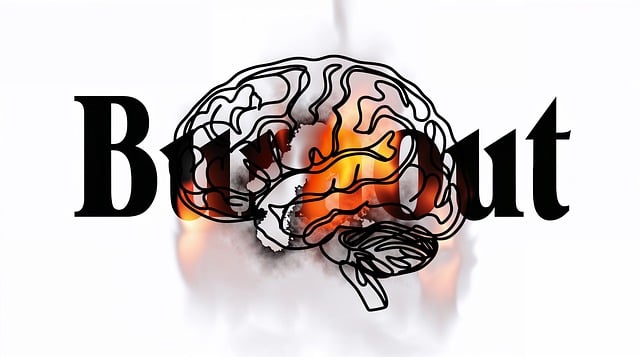Crisis Intervention Teams (CITs) provide immediate, comprehensive mental health support for vulnerable individuals, including children. Multidisciplinary teams employ therapeutic techniques like self-awareness exercises and biofeedback to empower clients in managing stress and emotions. By integrating tailored communication strategies, CITs create a supportive environment. Training programs equip professionals with essential skills, focusing on trauma impact, compassionate support, and techniques like biofeedback for children. Biofeedback therapy teaches kids to control physiological responses during crises, building confidence and self-soothing skills. The training simulates real-life scenarios through role-playing and workshops, emphasizing conflict resolution and self-care practices to prevent burnout. Ultimately, CIT training enhances emotional intelligence and coping mechanisms in both adults and children, fostering healthier communities.
In today’s complex landscape, Crisis Intervention Teams (CITs) play a vital role in mental health support. This article delves into the critical nature of CIT training programs, focusing on their impact and practical components. We explore specific techniques like biofeedback, which have proven effective in therapy for children in crisis. By examining real-world applications and benefits, we highlight how these programs prepare professionals to handle unpredictable situations, ultimately enhancing care and outcomes.
- Understanding Crisis Intervention Teams: A Vital Role in Mental Health Support
- The Impact of Training: Equipping Professionals for Effective Response
- Therapy for Children in Crisis: A Focus on Biofeedback Techniques
- Practical Components of Crisis Intervention Team Training Programs
- Real-World Applications and Benefits: Preparing for Unpredictable Situations
Understanding Crisis Intervention Teams: A Vital Role in Mental Health Support

Crisis Intervention Teams (CITs) play a vital role in mental health support, particularly for vulnerable populations such as children. These teams are designed to provide immediate and effective assistance during crises, offering a critical safety net when traditional therapy may not be readily accessible. CITs typically include professionals from various disciplines, such as psychologists, social workers, and nurses, who collaborate to offer comprehensive care. One unique aspect of these teams is their focus on therapeutic techniques like self-awareness exercises and biofeedback, which empower individuals to manage their stress and emotions.
By integrating communication strategies tailored for diverse needs, CITs foster a supportive environment where individuals feel heard and understood. This proactive approach not only addresses acute situations but also equips participants with tools for long-term mental well-being. Moreover, trauma support services are a core component of many CIT programs, recognizing the profound impact of traumatic events on a person’s mental health. Through these interventions, teams strive to ensure that individuals in crisis receive not just immediate relief but also the resources and skills necessary for resilience and recovery.
The Impact of Training: Equipping Professionals for Effective Response

Effective crisis intervention team training programs are instrumental in equipping professionals with the skills needed to respond to psychological emergencies. Through comprehensive instruction, participants gain a deeper understanding of trauma and its impact on individuals, enabling them to provide more compassionate and tailored support. These programs often incorporate therapeutic techniques such as therapy for children and biofeedback, which have proven beneficial in managing stress, anxiety, and even preventing depression.
The training fosters empathy building strategies, allowing professionals to connect with clients on a deeper level. By learning mood management techniques, participants can help individuals regulate their emotions during crises, promoting healthier coping mechanisms. Ultimately, well-rounded crisis intervention team training equips practitioners to navigate complex situations with sensitivity and expertise, ensuring better outcomes for those in need.
Therapy for Children in Crisis: A Focus on Biofeedback Techniques

In crisis intervention team training programs, a significant component is dedicated to helping children navigate and manage their emotional crises effectively. One powerful tool in this arsenal is biofeedback therapy, which has shown remarkable results in teaching kids techniques for emotional regulation. Biofeedback goes beyond traditional talk therapy by empowering children with direct control over their physiological responses using Mind Over Matter principles. By learning to recognize and modify bodily reactions, children can gain a sense of agency during stressful situations, fostering improved emotional resilience.
Through biofeedback sessions, young individuals are taught to monitor and adjust parameters such as heart rate, skin conductance, and muscle tension. This real-time feedback allows them to practice mindful interventions, enabling better stress management. Moreover, these techniques not only help in the moment but also offer a confidence boost by teaching children how to self-soothe and remain calm, skills that are invaluable throughout their lives.
Practical Components of Crisis Intervention Team Training Programs

Crisis intervention team training programs are designed to equip individuals with the skills needed to effectively manage and resolve crises in various settings, from schools to communities. These programs incorporate practical components such as role-playing scenarios, case studies, and interactive workshops to simulate real-life crisis situations. Participants learn critical thinking and problem-solving strategies, allowing them to make informed decisions during high-pressure events.
One key component often included is therapy for children, focusing on trauma-informed care and emotional regulation techniques. Biofeedback is another valuable tool taught in these programs, enabling individuals to gain control over their physiological responses during stressful situations. Additionally, mental wellness coaching programs and self-care practices are integral to fostering resilience and preventing burnout among crisis intervention team members. Conflict resolution techniques are also emphasized, teaching participants how to de-escalate tensions and facilitate peaceful resolutions in various contexts.
Real-World Applications and Benefits: Preparing for Unpredictable Situations

Crisis intervention team training programs equip professionals with invaluable skills to navigate and respond to high-pressure situations, ensuring better outcomes for individuals facing mental health crises. These real-world applications extend beyond traditional therapy settings, encompassing diverse environments such as schools, workplaces, and community centers. By integrating techniques like biofeedback into crisis intervention strategies, teams can foster emotional intelligence and enhance coping mechanisms in both adults and children.
The benefits of such training are multifaceted. It prepares interventionists to handle unpredictable scenarios with confidence, promoting effective communication and de-escalation tactics. Moreover, it raises mental health awareness among community members, encouraging proactive support services for trauma victims and those struggling with emotional challenges. Through these programs, individuals develop the resilience needed to confront crises head-on, ultimately contributing to healthier and safer communities.
Crisis intervention team (CIT) training programs are instrumental in equipping professionals with the skills needed to effectively respond to mental health crises. By focusing on practical components such as biofeedback techniques, these programs enhance the ability of CIT members to provide therapy for children in crisis, ensuring a more robust support system for vulnerable individuals. The real-world applications of CIT training extend beyond predictable scenarios, allowing professionals to navigate unpredictable situations with enhanced confidence and effectiveness.












